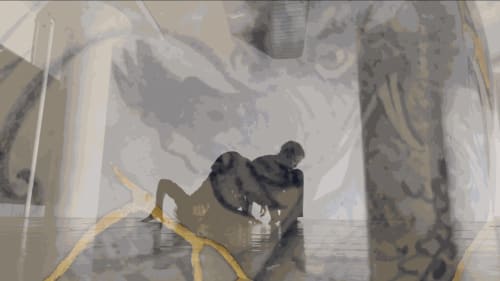Let me tell you about an artwork that, published on a postcard, has hung above my bed for the past six months—an artwork that has reemerged from the archives to be seen at the Smart Museum of Art as part of their recent exhibition Porcelain: Material and Storytelling, an artwork that I find unendingly mesmeric and meaningful in its subtle complexity and its quiet beauty. Let me tell you about Yeesookyung’s Translated Vase (2007).
Salvaged from several South Korean kilns, the fragments of pottery that form this piece were discarded by ceramic masters as imperfect replicas of Goryeo (918–1392) celadons and Joseon (1392–1897) white porcelains. With them, the Korean contemporary artist Yeesookyung—perhaps inspired by the Japanese practice of kintsugi or perhaps playing on the homonymic relationship between the Korean words for “crack” and “gold”—created a form beautiful unto itself.
Translated Vase sits like a massive tumor on its pedestal, unprotected by glass, bulging out into the space of the gallery. It is in places smooth and convex and delicate like an egg. And in others, around the ribbons of gold which unite the various shards of pottery, it is jagged and splintered. Under a glossy sheen, painted motifs—some animalistic, some foliaceous, some geometric, all blue—intermingle across sections, giving the work a sense of cohesion and oneness, despite its fractal nature. At the mouth, the vessel is closed off; it’s not much of a vessel at all.
April 22, 2022

